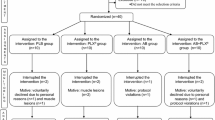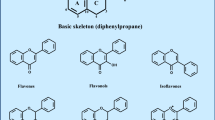Abstract
Legumes are considered to have beneficial health implications, which have been attributed to their phytochemical content. Polyphenols are considered the most important phytochemical compounds extensively studied for their antioxidant properties. The aim of the present study was to examine the effects of potent antioxidant legume plant extracts on xanthine oxidase (XO), catalase (CAT) and superoxide dismutase (SOD) activities. XO exerts a dual role, as it is the major contributor of free radicals during exercise while it generates uric acid, the most potent antioxidant molecule in plasma. CAT and SOD are two of the main enzymes of the antioxidant defence of tissues. We demonstrate that the majority of the extracts inhibited XO activity, but they had no effect on CAT inhibition and SOD induction when used at low concentrations. These results imply that the tested extracts may be considered as possible source of novel XO inhibitors. However, we have shown that allopurinol administration, a known XO inhibitor, before exercise reduces performance and induces oxidative stress in rats. Considering the fact that the extracts examined had an inhibitory effect on XO activity, possibly posing a restriction in their characterization as antioxidants, phytochemical antioxidant administration before exercise should probably be reconsidered.
Similar content being viewed by others
References
Aebi H (1984) Catalase in vitro. Meth Enzymol 105:121–126
Bergamini C, Cicoira M, Rossi A, Vassanelli C (2009) Oxidative stress and hyperuricaemia: pathophysiology, clinical relevance, and therapeutic implications in chronic heart failure. Eur J Heart Fail 11:444–452
Borges F, Fernandes E, Roleira F (2002) Progress towards the discovery of xanthine oxidase inhibitors. Curr Med Chem 9:195–217
Butler R, Morris AD, Belch JJ, Hill A, Struthers AD (2000) Allopurinol normalizes endothelial dysfunction in type 2 diabetics with mild hypertension. Hypertension 35:746–751
Cos P, Ying L, Calomme M, Hu JP, Cimanga K, Van Poel B, Pieters L, Vlietinck AJ, Vanden Berghe D (1998) Structure–activity relationship and classification of flavonoids as inhibitors of xanthine oxidase and superoxide scavengers. J Nat Prod 61:71–76
Cotelle N (2001) Role of flavonoids in oxidative stress. Cur Top Med Chem 1:569–590
Crozier A, Jaganath IB, Clifford MN (2009) Dietary phenolics: chemistry, bioavailability and effects on health. Nat Prod Reports 26:1001–1043
Dieterich S, Bieligk U, Beulich K, Hasenfuss G, Prestle J (2000) Gene expression of antioxidative enzymes in the human heart: increased expression of catalase in the end-stage failing heart. Circulation 101:33–39
Doehner W, Anker SD (2005) Xanthine oxidase inhibition for chronic heart failure: is allopurinol the next therapeutic advance in heart failure? Heart 91:707–709
Farquharson CA, Butler R, Hill A, Belch JJ, Struthers AD (2002) Allopurinol improves endothelial dysfunction in chronic heart failure. Circulation 106:221–226
Ferguson LR (2001) Role of plant polyphenols in genomic stability. Mutation Res 475:89–111
Gomez-Cabrera MC, Borrás C, Pallardó FV, Sastre J, Ji LL, Vina J (2005) Decreasing xanthine oxidase-mediated oxidative stress prevents useful cellular adaptations to exercise in rats. J Physiol 567:113–120
Halliwell B (2000) The antioxidant paradox. Lancet 355:1179–1180
Halliwell B (2001) Free radicals and other reactive species in disease. In: Nature encyclopedia of life sciences. Nature Publishing Group, London, pp 1–7
Heim KE, Tagliaferro AR, Bobilya DJ (2002) Flavonoid antioxidants: chemistry, metabolism, and structure–activity relationships. J Nutr Biochem 13:572–584
Ji LL (1999) Antioxidants and oxidative stress in exercise. Proc Soc Exper Biol Med 222:283–292
Ji LL (2007) Antioxidant signaling in skeletal muscle: a brief review. Exper Gerontol 42:582–593
Ji LL, Gomez-Cabrera MC, Vina J (2006) Exercise and hormesis: activation of cellular antioxidant signaling pathway. Ann NY Acad Sci 1067:425–435
Keilin D, Hartree EF (1934) Inhibitors of catalase reaction. Nature 134:933
Kushi LH, Meyer KA, Jacobs DR (1999) Cereals, legumes, and chronic disease risk reduction: evidence from epidemiologic studies. Am J Clin Nutr 70:451–S458
Ng LL (2009) Targeting oxidative stress in heart failure. Heart Metab 42:21–24
Mazur WM, Duke JA, Wähälä K, Rasku S, Adlercreutz H (1998) Isoflavonoids and lignans in legumes: nutritional and health aspects in humans. J Nutr Biochem 9:193–200
McCord JM, Fridovich I (1968) The reduction of cytochrome c by milk xanthine oxidase. J Biol Chem 243:5753–5760
Messina MJ (1999) Legumes and soybeans: overview of their nutritional profiles and health effects. J Nutr Biochem 70:S439–S450
Nagao A, Seki M, Kobayashi H (1999) Inhibition of xanthine oxidase by flavonoids. Biosci Biotechnol Biochem 63:1787–1790
Rice-Evans CA, Miller NJ, Paganga G (1996) Structure–antioxidant activity relationships of flavonoids and phenolic acids. Free Rad Biol Med 20:933–956
Rochfort S, Panozzo J (2007) Phytochemicals for health, the role of pulses. J Agric Food Chem 55:7981–7994
Scalbert A, Manach C, Morand C, Rémésy C (2005) Dietary polyphenols and the prevention of diseases. Crit Rev Food Sci Nutr 45:287–306
Singleton VL, Orthofer R, Lamuela-Raventos RM (1999) Analysis of total phenols and other oxidation substrates and antioxidants by means of Folin-Ciocalteu reagent. Meth Enzymol 299:152–178
Spanou C, Bourou G, Dervishi A, Aligiannis N, Angelis A, Komiotis D, Skaltsounis AL, Kouretas D (2008) Antioxidant and chemopreventive properties of polyphenolic compounds derived from Greek legume plant extracts. J Agric Food Chem 56:6967–6976
Spanou C, Stagos D, Aligiannis N, Kouretas D (2010) Influence of potent antioxidant Leguminosae family plant extracts on growth and antioxidant defence system of Hep2 cancer cell line. J Med Food 13:149–155
Spanou C, Stagos D, Tousias L, Angelis A, Aligiannis N, Skaltsounis AL, Kouretas D (2007) Assessment of antioxidant activity of extracts from unique Greek varieties of Leguminosae plants using in vitro assays. Anticancer Res 27:3403–3410
Van Hoorn DE, Nijveldt RJ, Van Leeuwen PA, Hofman Z, M’Rabet L, De Bont DB, Van Norren K (2002) Accurate prediction of xanthine oxidase inhibition based on the structure of flavonoids. Eur J Pharm 451:111–118
Vasilopoulou E, Georga K, Joergensen MB, Naska A, Trichopoulou A (2005) The antioxidant properties of Greek foods and the flavonoid content of the Mediterranean menu. Cur Med Chem Immun Endoc Metab Agents 5:33–45
Venn BJ, Mann JI (2004) Cereal grains, legumes and diabetes. Eur J Clin Nutr 58:443–1461
Veskoukis AS, Nikolaidis MG, Kyparos A, Kokkinos D, Nepka C, Barbanis S, Kouretas D (2008) Effects of xanthine oxidase inhibition on oxidative stress and swimming performance in rats. App Physiol Nutr Metabol 33:1140–1154
Conflict of interest
The authors declare that there is no conflict of interest.
Author information
Authors and Affiliations
Corresponding author
Electronic supplementary material
Below is the link to the electronic supplementary material.
Supplementary Fig. 1
Flavonoids identified in aqueous extract of Lathyrus laxiflorus subsp. Laxiflorus (PDF 14 kb)
Rights and permissions
About this article
Cite this article
Spanou, C.I., Veskoukis, A.S., Stagos, D. et al. Effects of Greek legume plant extracts on xanthine oxidase, catalase and superoxide dismutase activities. J Physiol Biochem 68, 37–45 (2012). https://doi.org/10.1007/s13105-011-0117-z
Received:
Accepted:
Published:
Issue Date:
DOI: https://doi.org/10.1007/s13105-011-0117-z




